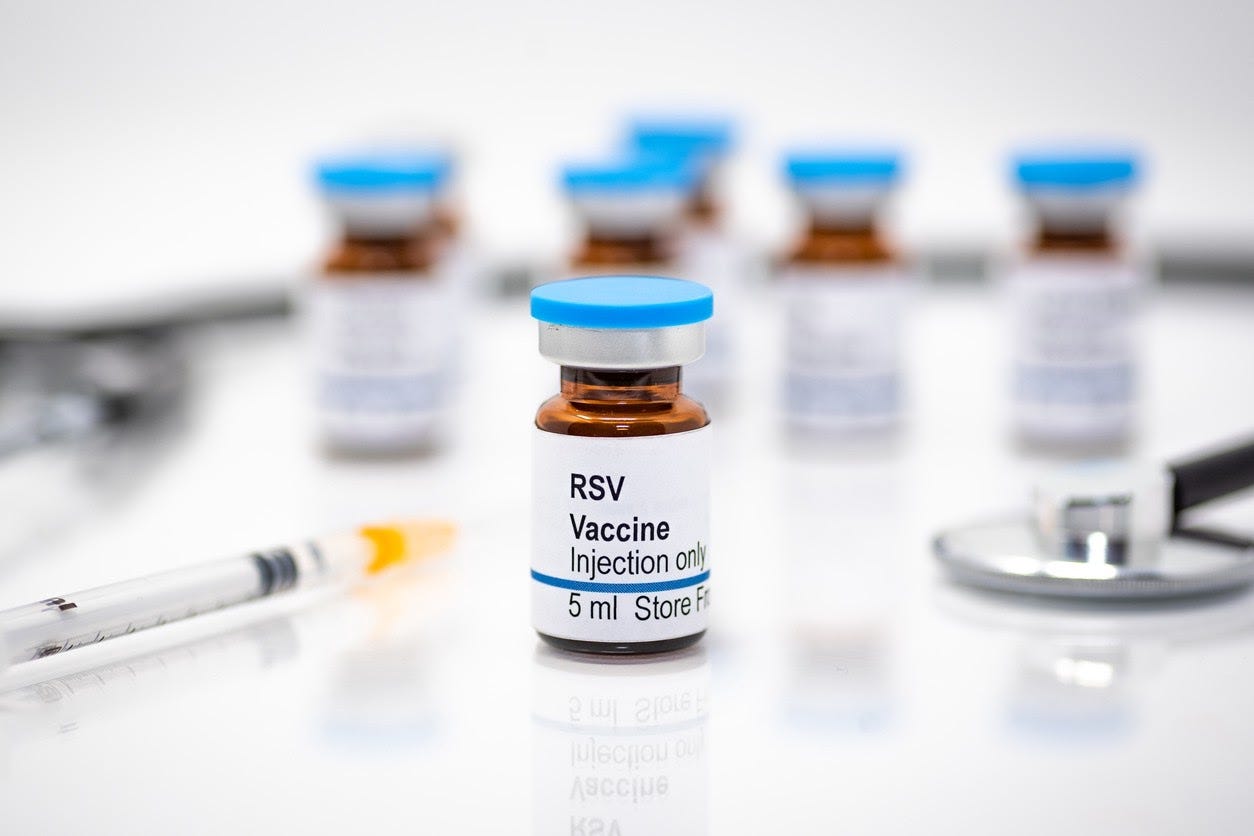RSV season. It’s the time of year when pediatric offices see the sickest babies and young children. When a parent calls about their young infant who is coughing, wheezing, or working hard to breathe, our immediate response is to get them into the office as soon as possible to evaluate them.
What is RSV?
RSV or Respiratory Syncytial Virus is a common respiratory virus that typically causes mild cold symptoms but can cause more severe illness in children under two years old. Premature infants and babies with heart or lung conditions are more susceptible to severe illness caused by RSV.
Each year, RSV leads to 2.1 million outpatient visits and over 50,000 hospitalizations in children under five years old (CDC).
How is RSV spread?
RSV infection is passed from person to person through respiratory droplets. Tiny amounts of the virus spread from person to person when someone coughs or sneezes. We can reduce the risk of respiratory transmission by avoiding sick people, washing hands frequently, and wiping down surfaces and toys that your baby will touch.
What are the symptoms of RSV?
RSV shares many of the symptoms associated with the common cold. For many children, symptoms of RSV infection may include:
- Runny nose
- Cough
- Fussiness
- Poor feeding
- Fever > 100.4
Sometimes a cold is not just a cold
Although most RSV children will experience mild symptoms, this viral illness can progress and cause a more severe disease called RSV bronchiolitis. The respiratory syncytial virus is the most common cause of bronchiolitis.
Bronchiolitis is when the lungs’ bronchioles become swollen and full of mucus, which may cause wheezing or difficulty breathing in babies. Bronchiolitis typically resolves on its own but sometimes requires treatment or hospitalization to monitor or provide respiratory support.
More severe symptoms of RSV and bronchiolitis may include:
- Wheezing
- Fast or labored breathing
- Grunting or nostrils flaring
- Lips or fingernails turning blue (caused by low oxygen level)
If your baby shows RSV symptoms or has any wheezing or labored breathing, you should call their healthcare provider.
You should also call their healthcare provider immediately if your baby is under three months old and has a fever of > 100.4.
Call 911 if your baby is struggling to breathe or if their lips are turning blue.
How can we manage mild RSV at home?
If your baby has mild symptoms, the illness can safely be managed at home.
Parents can use nasal saline and a suction bulb to remove mucus from their baby’s nostrils gently. Put 1–2 drops of saline in one nostril. Gently lean your baby back for a minute so the saline can thin out the mucus. Squeeze the suction bulb. Place the tip in the nostril and release the suction bulb to remove mucus. Then, repeat on the other side.
Nasal irrigation is most helpful before the baby breastfeeds or takes a bottle before going to sleep.
Parents can also use a humidifier in their baby’s room at night time. This will help thin out secretions and relieve congestion and cough.
If your baby has a fever and is fussy or uncomfortable, you can give them Motrin if they are six months or older or Tylenol if they are two months or older. Follow the age-adjusted dosing instructions listed on the bottle.
Many parents request prescriptions for antibiotics. Remember, RSV is a virus. Antibiotics only work against bacterial infections. Antibiotics will not treat a virus or help reduce the symptoms.

How can I prevent my baby from getting RSV?
It is important to remember that you can help prevent your baby from getting RSV by avoiding sick contacts and washing hands frequently. Breastfeeding is also protective against RSV.
RSV can also be prevented by a vaccine given as a monthly injection during RSV season (late fall to spring). We recommend the RSV vaccine for the following high risk groups:
- Premature infants
- Infants with chronic lung disease
- Infants with congenital heart disease
This article was contributed by MacArthur Medical Center’s Pediatric Nurse Practitioner Abby Boynton.



